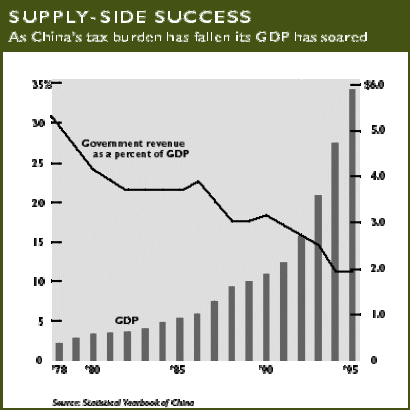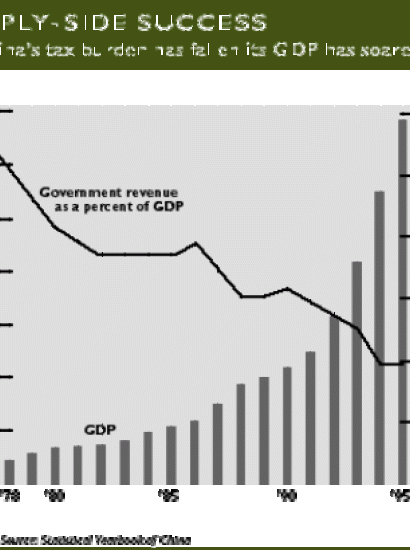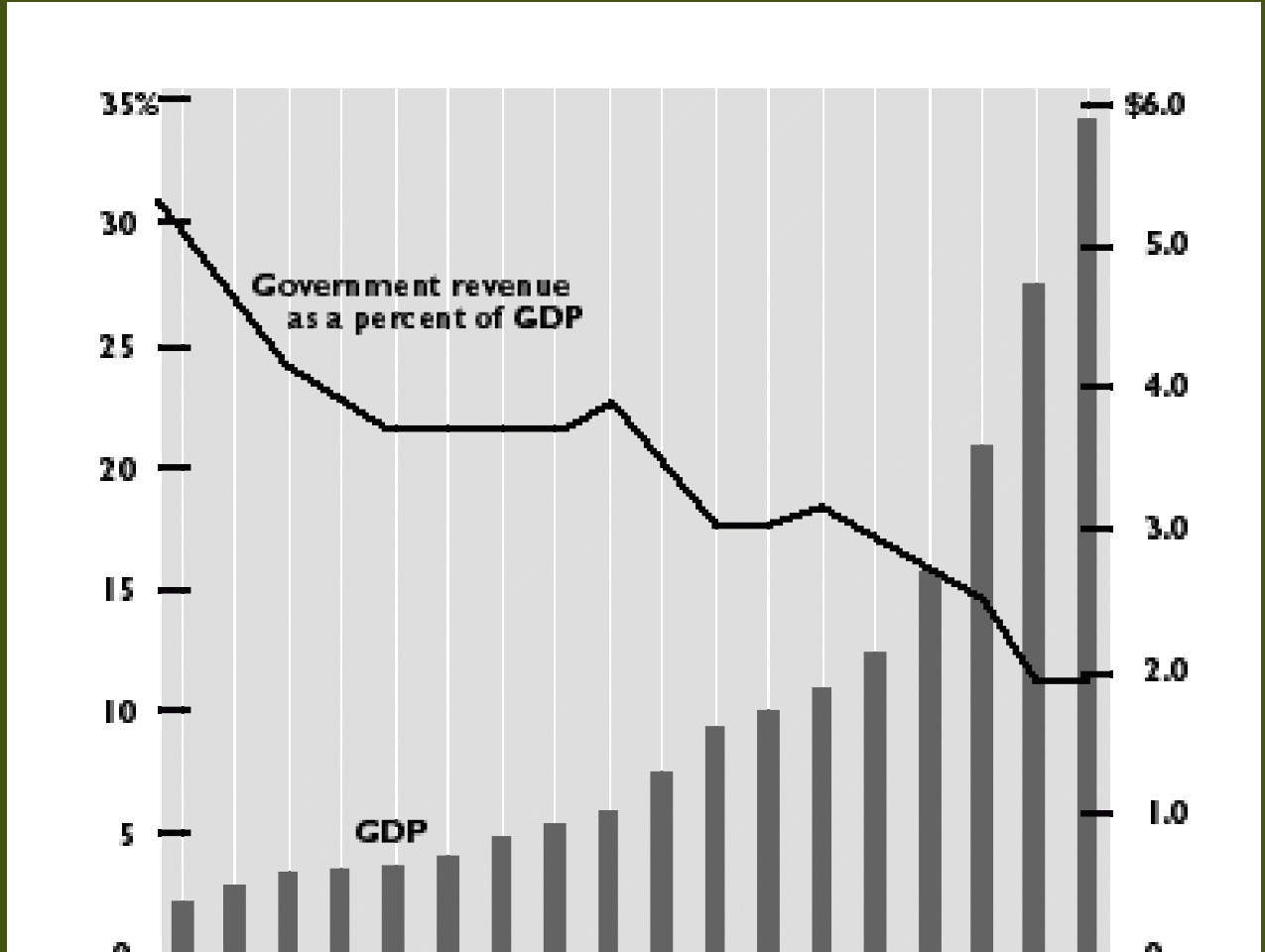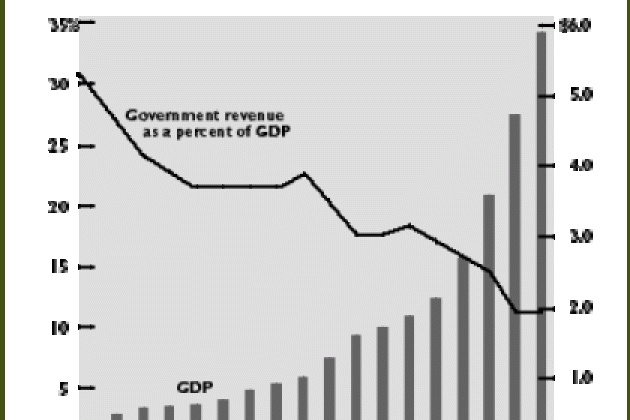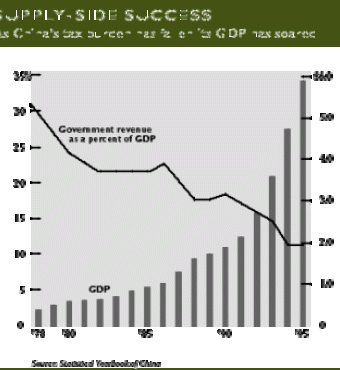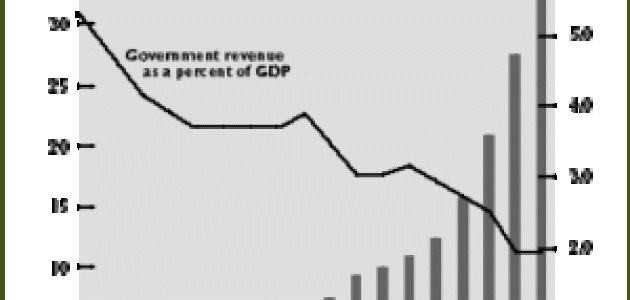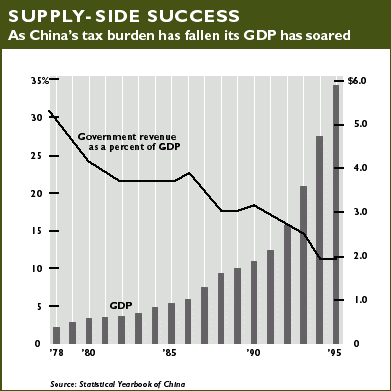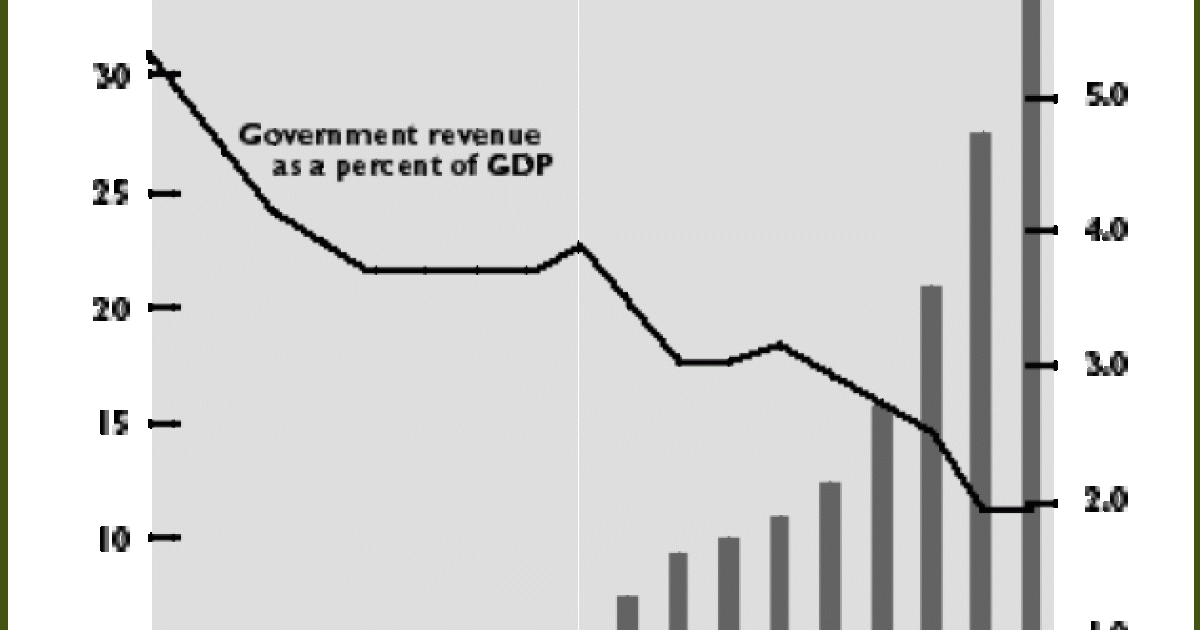In recent years, supply-side economics has taken a back seat around the world to the politics of balanced budgets, and--where deemed necessary--tax increases to achieve balance. This is especially true among developing and transition economies. The International Monetary Fund (IMF) routinely insists on increased tax collections as a precondition to financial aid. Indeed, the IMF recently forced the Thai government to accept a 7 to 10 percent hike in the value-added tax and a host of other "austerity" measures so that Thailand could get a multibillion-dollar bailout to help it out of its currency turmoil.
It is ironic that communist China, notably absent from the IMF list of clients, provides the best evidence of the benefits of a supply-side approach. Supply-side economics emphasizes the incentive-driven, productive capacity of private sector activities, in contrast to the Keynesian demand-side strategies that use government-centered fiscal and monetary stimuli, along with measures to attain macroeconomic balances.
A World Record
China has averaged 10 percent real growth annually for nineteen years, a world record. This growth, admittedly, took off from an initially low starting point. But per capita income has reached about $2,750 in purchasing-power parity terms, which makes China "middle income," according to the World Bank, and it continues to grow at about 10 percent. The key ingredient fueling this expansion is massive, sustained tax reduction, which has provided financial resources for the burgeoning private sector and spawned a high savings rate. The ratio of investment to consumption has steadily risen, with funds disproportionately flowing into the nonstate sector.
| China has averaged 10 percent real growth annually for nineteen years, a world record. The key ingredient? Massive, sustained tax reduction. |
Let's look at the numbers. In 1978, the late Chinese leader Deng Xiaoping launched economic reforms that set China on a path of rapid growth. Between 1978 and 1995 (the latest year for which Chinese State Statistical Bureau data are available), the gross domestic product (GDP) expanded from 362 billion yuan to 5.77 trillion yuan at current prices, or almost fivefold in real terms. Gross national product per capita rose from 379 yuan to 4,757 yuan (current prices), or fourfold in real terms. During this eighteen-year stretch, annual real growth averaged 10 percent, while real growth in per capita income averaged 8.5 percent. (The IMF's estimate of China's growth in 1996 is 9.7 percent.) If China can sustain this rate, national output will double again in seven years and quadruple in fourteen years. This growth has analysts projecting China's economy as the world's largest by 2020 in absolute terms and its people achieving parity with U.S. living standards by the middle of the twenty-first century.
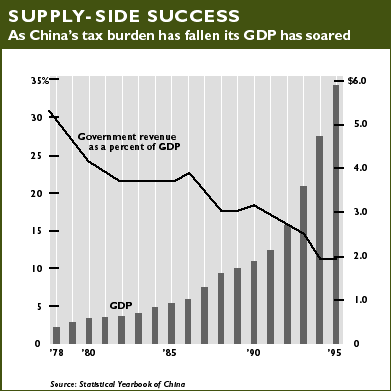
Deng's reform package included the establishment of coastal economic zones, increased investment by foreigners, liberalized trade, and a free market in agriculture. But the application of supply-side tax policy was the main component. In 1978, total government revenue consumed about 31 percent of GDP. Deng's policies reduced China's tax burden relentlessly, year in and year out. By the end of 1995, the tax burden had fallen to 10.7 percent of GDP, a cut of more than 20 percentage points, or two-thirds in relative terms.
Tax cuts fueled the privatization of the economy. Deng's policy of massive tax reduction shifted one-fifth of all resources from government hands to the emerging town and village enterprises and private firms, which productively used those resources. The private sector grew faster than the country's 10 percent annual average. Since the government didn't tax away the private sector's prosperity, the fruits of growth were plowed back into expanded activity. This had a snowballing effect, speeding the transformation toward private ownership. The state sector now accounts for 34 percent of the gross output value of industry, down from 82 percent in 1978.
From 1978 to 1994, tax cuts and reinvestment combined to boost the real gross output value of industry by 920 percent, an annual average of 14.9 percent. If the government had stopped subsidizing state-owned businesses, China's growth would have been faster. When agriculture is taken into account, the shift to private ownership is even greater. Agriculture, which contributes about one-sixth of output, has gone from a system of virtual state control to one of "household responsibility," a euphemism for almost complete private ownership.
The table above shows that only twice since 1978 has the tax burden risen, by 1.34 percent of GDP in 1986 and 0.43 percent of GDP in 1990. GDP growth slowed in 1986. There was also a period of relatively slow growth from 1989 to 1990, when the tax burden remained stagnant in relative terms. As the tax burden begin to lessen again after 1991, growth accelerated.
| If China can sustain its present growth rate, national output will double again in seven years and quadruple in fourteen years. At this rate the Chinese will achieve parity with U.S. living standards by the middle of next century. |
Nor was the Chinese government starved for funds as taxes fell. It is difficult for any government to spend money as fast as it comes in when growth is high, as evidenced in Singapore, Hong Kong, and even now in the United States. It takes time to build roads, schools, and hospitals, to hire contractors, and to train teachers and nurses. More important, sustained high growth opens up opportunities for business and for higher-paying jobs in the nonstate sector, further easing the pressure on the public sector to provide salaries, housing, and goods and services. China's fiscal deficits exceeded 1.0 percent of GDP only four times from 1978 to 1995, and the average for the entire period was 0.9 percent. It is important to note that China's relative fiscal health reflected its economic health rather than any emphasis on tax collection.
The Deng economic program is nearly two decades old, a period that exceeds in length the high-growth postwar recoveries in Europe and Japan. Its record dwarfs that of postwar Germany and Japan, which began with higher levels of human capital. China's experience thus confirms the beneficial role of supply-side policies in development and provides a model for the economies of Central and Eastern Europe.
China's experience challenges the prevailing IMF orthodoxy endorsed by many macroeconomists and development economists. That orthodox view holds that efforts to boost tax revenue as a share of GDP are crucial to stabilizing public finances and establishing macroeconomic conditions that propel growth. It's no accident that the IMF urges Russia and other transition economies to increase tax collections and impose new taxes. Higher revenue, it is argued, reduces pressure on monetary authorities to print money to finance public spending, thereby curtailing inflation. This macroeconomic stability is presumed to encourage investment.
Obvious Lessons
China demonstrates that reducing the size of government, even at the expense of fiscal deficits, is more important than balancing the government's books when taxing and spending consume a high level of GDP. In this regard, IMF orthodoxy can be an impediment to privatization.
It's not easy to cut huge chunks out of taxes, as Deng did in China. But the results speak for themselves. For the first time in China's history, millions of people have joined the ranks of the middle class, and the prospects are bright for hundreds of millions more. The lessons are obvious not only for developing economies but also for economies closer to home. It may be worth remembering that all levels of U.S. government--federal, state, and local--taxed away only 10 percent of GDP in 1929; today the figure is around 34 percent. Maybe it's time for more Americans to read the works of Chairman Deng.








